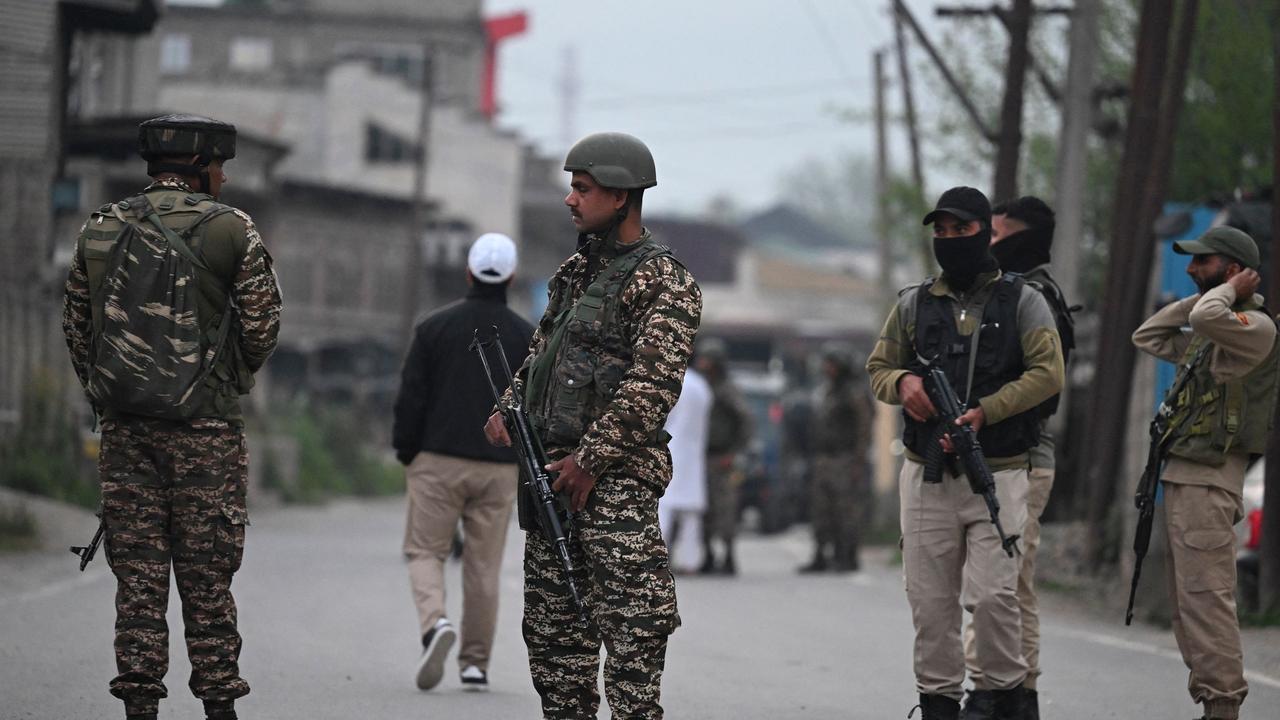South Korea wildfires ‘largest on record’: disaster chief
Wildfires in South Korea are now the largest and deadliest there on record, having burned more forest and killed more people than any previous blaze, as the death toll hit 27.

Asia
Don't miss out on the headlines from Asia. Followed categories will be added to My News.
More than a dozen fires broke out over the weekend, scorching wide swathes of the southeast and forcing around 37,000 people to flee, with the fire cutting off roads and downing communications lines as residents escaped in panic.
South Korea’s Ministry of Interior and Safety said that 27 people had been killed and dozens more injured, with the toll likely to rise. It is the highest number of deaths since the Korea Forest Service started records for wildfires in 1987.
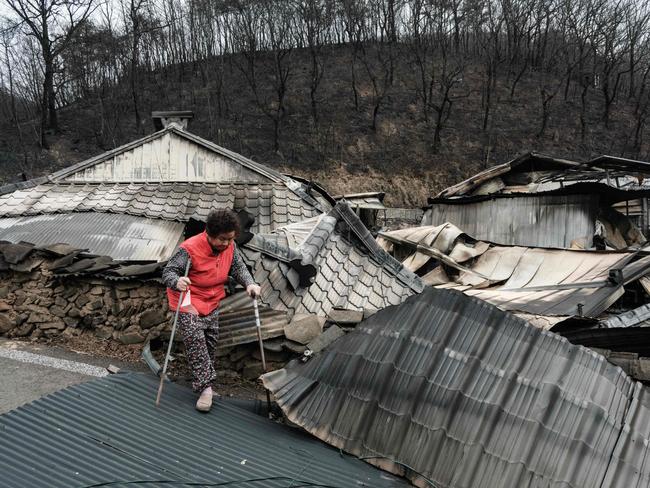
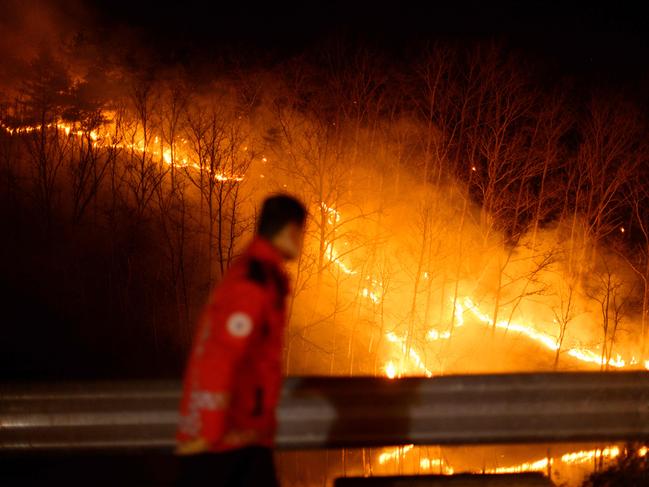
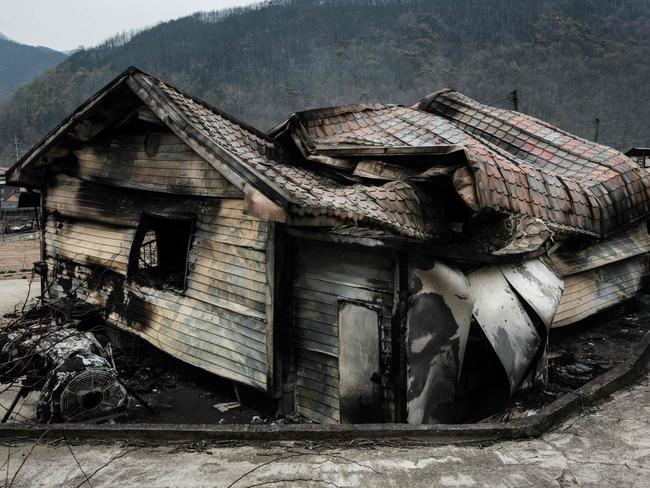
More than 86,500 acres of forest have been burned, Lee Han-kyung, disaster and safety division chief said, adding that the fire was still spreading “rapidly”.
The extent of damage makes it South Korea’s largest ever wildfire, after an inferno in April 2000 that scorched the east coast.
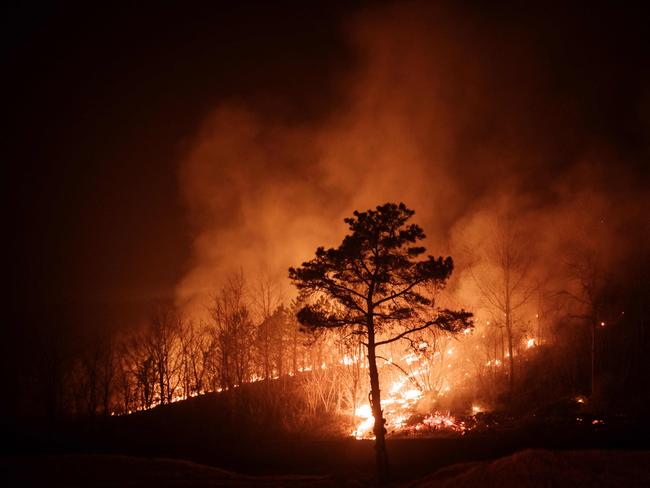
Authorities said changing wind patterns and dry weather had revealed the limitations of conventional firefighting methods.
Many of those killed were residents - in particular the elderly.
At least three firefighters were killed, and a pilot in a firefighting helicopter died when his aircraft crashed in a mountain area, officials said.
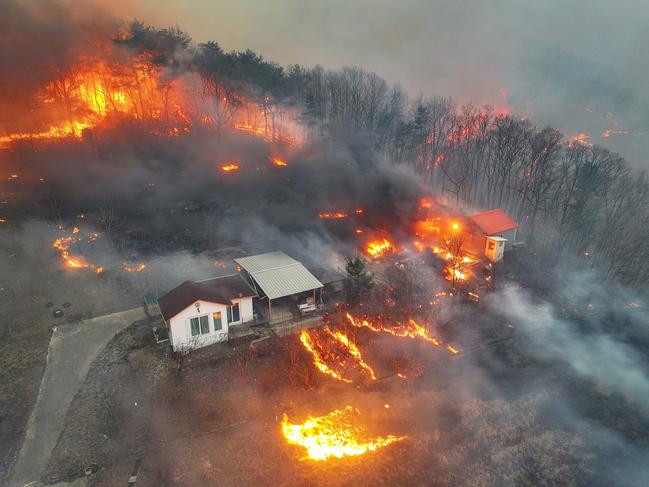
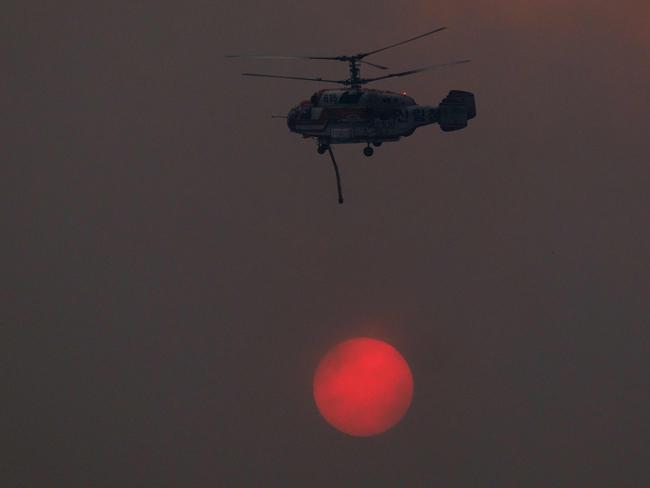
CLIMATE CHANGE, FORESTRY TO BLAME
Last year was South Korea’s hottest year on record, and the fire-hit region had been experiencing unusually dry weather with below-average precipitation, authorities said.
“This wildfire has once again exposed the harsh reality of a climate crisis unlike anything we’ve experienced before,” disaster chief Lee said.
“The affected areas have seen only half the average rainfall, coupled with unusually strong winds, which have drastically accelerated the spread of the fire and intensified the damage,” he said.
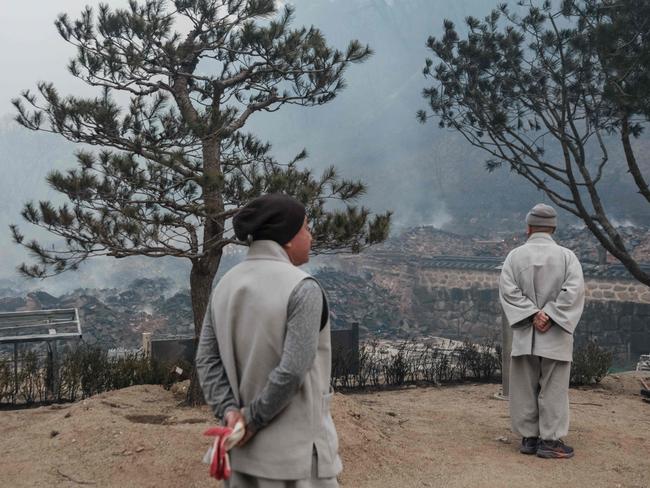
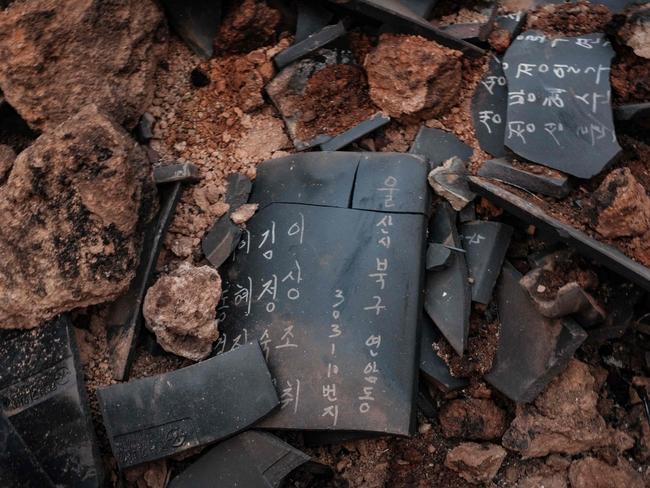
Yeh Sang-Wook, professor of climatology at Seoul’s Hanyang University, told AFP that the lack of rainfall had dried out the land “creating favourable conditions for wildfires.”
“We can’t say that it’s only due to climate change, but climate change is directly (and) indirectly affecting the changes we are experiencing now. This is a sheer fact.”
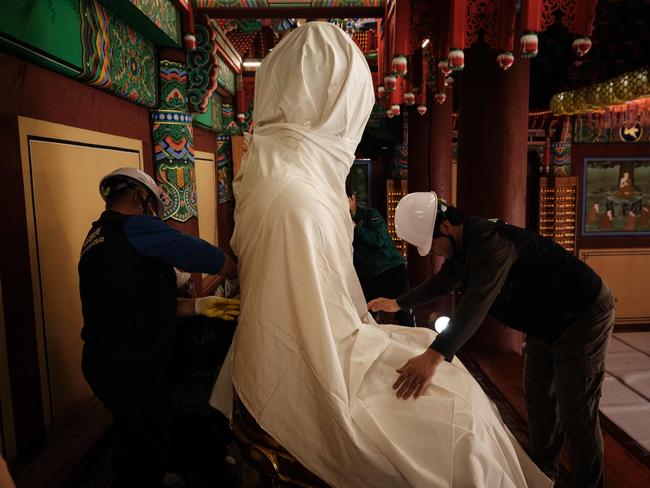
But another expert, professor Hong Suk-hwan at Pusan National University’s Department of Landscape Architecture, said the country’s forest management practices also took some blame.
South Korea has prioritised the preservation of large pine trees - packed with oily resin - above allowing a variety of deciduous trees to thrive, he said.
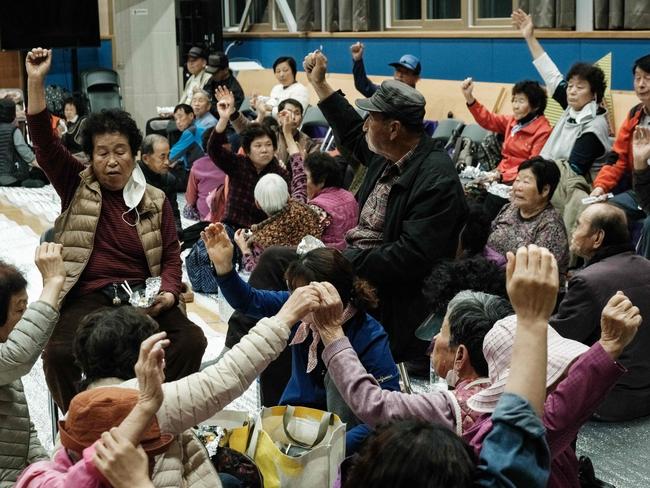
“If a fire breaks out, would it spread more easily on wet paper or on dry paper soaked in oil? Our forests are essentially covered in oil-soaked paper, creating an environment where wildfires can spread at an alarming speed,” he told AFP.
Were South Korea to have cultivated more deciduous trees in a natural mixed forest it “would slow wildfire spread and prevent it from escalating.”
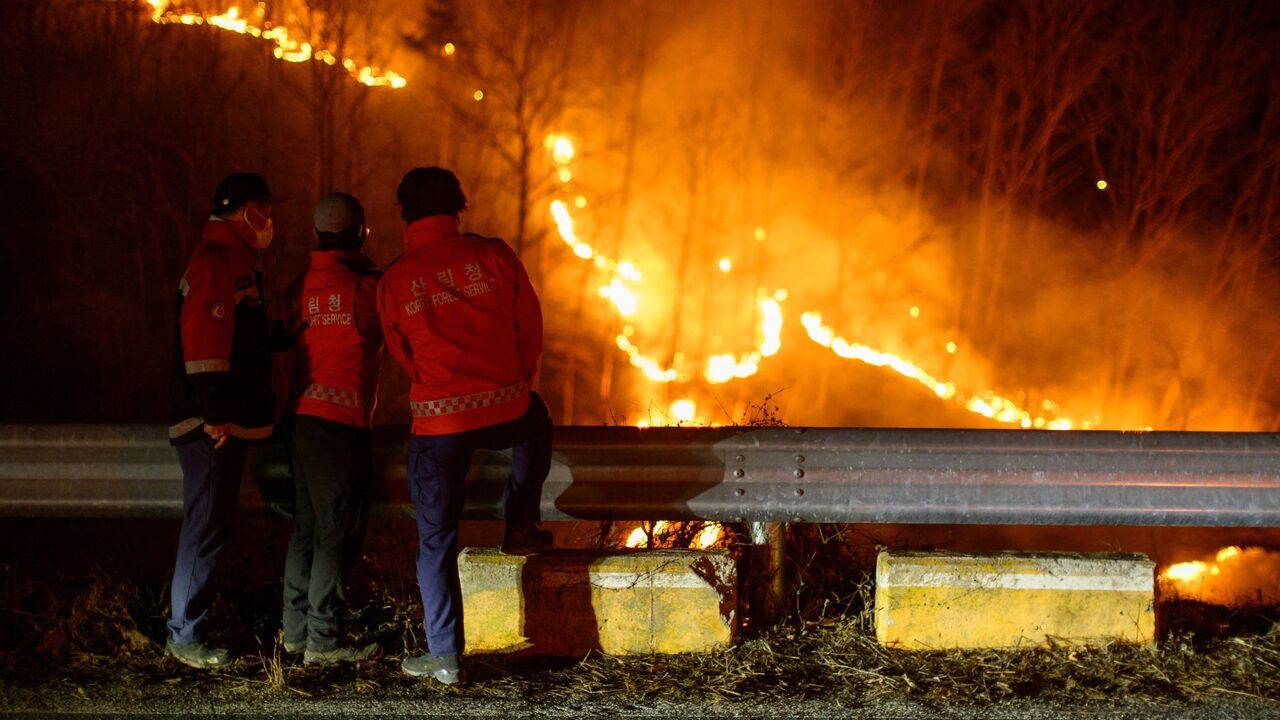
ANCIENT PINE SACRIFICED
A 200-year-old pine tree at Bongjeongsa temple in Andong - the oldest wooden structure in South Korea and a UNESCO-listed site - was cut down in a bid to preserve the temple itself.
“We had no choice but to cut it down … The fire is spreading rapidly from one pine tree to another,” the chief monk said.
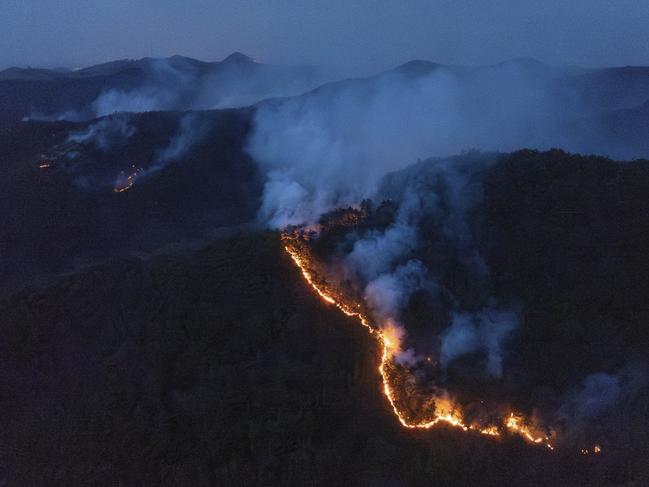
At UNESCO-listed Byeongsan Seowon, a former Confucian academy, the sky was hazy, AFP reporters saw, with fire trucks spraying water and fire retardants onto the historic site in a desperate bid to save it.
“We are spraying three tonnes of water every day,” Lee Seung-myung from the Andong fire department told AFP.
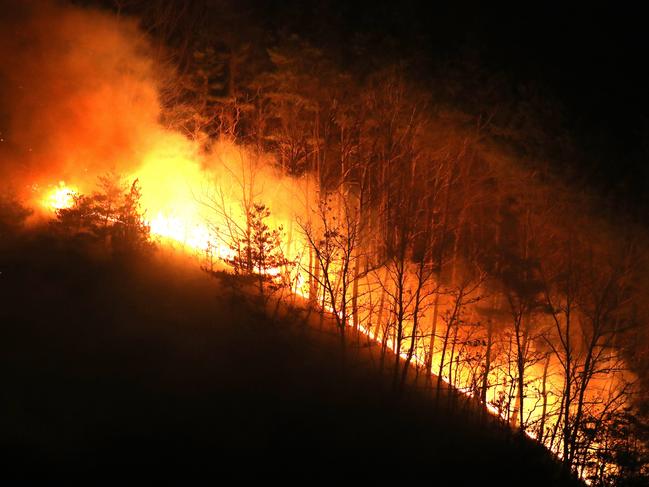
Choi Young-ho, a firefighter at the heritage site, said that they were at the mercy of the wind.
“If there is a strong wind, it will carry flames from afar - a very worrisome situation,” he said.
Rain is forecast for late Thursday, potentially giving authorities a much-needed window to extinguish the blazes.
More Coverage
Originally published as South Korea wildfires ‘largest on record’: disaster chief



